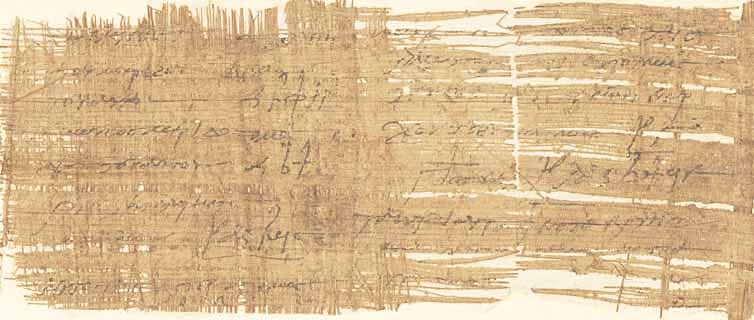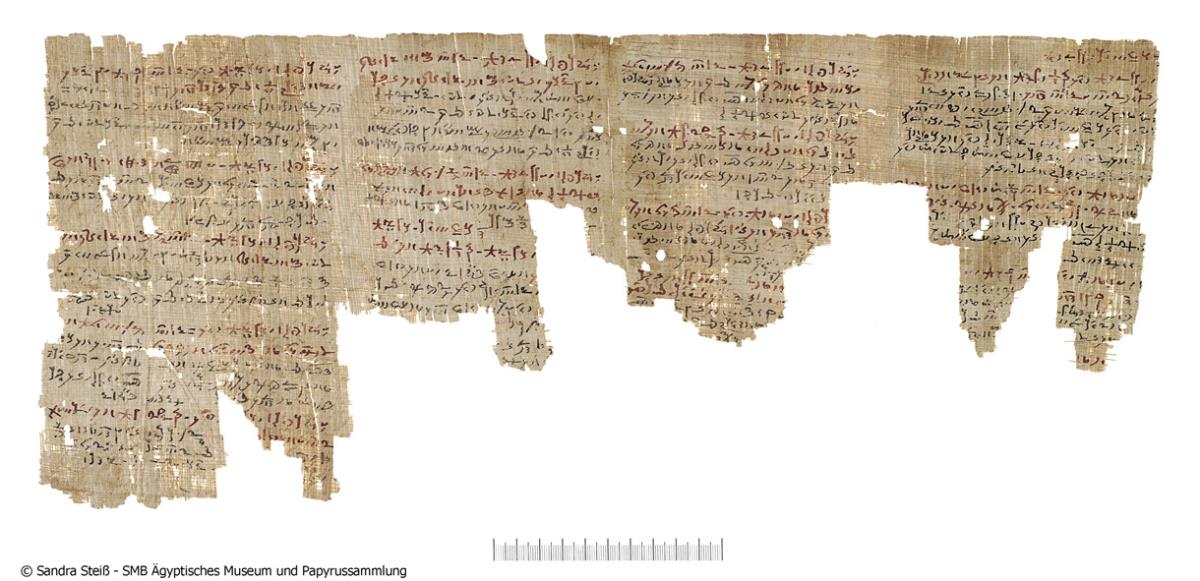P. 8345
The papyrus presented here is the surviving fragment of what must once have been a complete astrologer’s manual: a handbook containing predictions based on the positions of astrologically significant constellations at the time of an individual’s birth. These positions were those of the planets in relation to the twelve zodiac signs. The text is therefore a treatise on natal astrology, intended to deliver predictions concerning the future life of a male native (the term used for the person for whom a horoscope was cast).
The Demotic papyrus originates from Soknopaiou Nesos, a village in the Fayum Oasis southwest of modern Cairo, and dates to the Roman period, a time from which the majority of such material from Egypt has been preserved. While the surviving manuscript is of a Roman date, the composition itself may be older; the original version was possibly produced already under the Ptolemies (3rd–1st century BC), when the zodiac must have been introduced into Egypt.
The text is written in both black and red ink and the latter was used to mark new sections, each introducing a new set of predictions. With the aid of these rubrics, the practitioner could navigate the text and locate the relevant forecasts:
„He who was born when Venus was in the House of Misfortune, many bad rumours will spread about him in his youth. He will quarrel with a woman, but when he grows older this will cease. He will then be happy with a(nother) woman.”
This constellation, of course, was not the only one that would characterise the native’s future. Since the ancients recognised seven planets, including the Moon and the Sun, there would have been at least seven such sequences. Another passage reads:
„The one who was born when Mercury was in the House of the Evil Demon, he will be deformed, and a hidden disease will break out in his flesh. However, nothing will hold him back from his desires and one will not rush to oppose his wishes. When he grows older, he will become the possessor of property, and his final days will become beautiful.”
The forecasts address different aspects of life, spanning youth to old age. The two examples above touch on reputation, relationships, health, success, and wealth.
The astrologer’s task was to determine in which zodiac sign a given planet was located and then map that position onto the so-called dodekatropos, the twelve “places” or houses. Each place corresponded to a particular sphere of life, which became activated by the presence of a planet at the moment of birth. Since Venus was viewed as a beneficent planet (alongside Jupiter), it often yielded favourable outcomes for the native, whereas maleficent planets (Saturn and Mars) tended to produce adverse effects.
A particularly positive outcome results from Venus being in the House of the (Good) Demon:
„…as for this man, he will be favoured by fate; he will be the possessor of great riches. His heart will be elated by a wife, and his son will live to old age. He will earn a good name in his town, and all will honour him. Great favour will be bestowed upon him, and he will never suffer want throughout his life.”
Ideally, each chapter treating the influence of a particular planet was divided into twelve sections, corresponding to the twelve astrological places. The Berlin papyrus appears to preserve the closing part of the manual. Mercury and Venus were commonly treated as the last two planets in the Graeco-Roman period, in accordance with contemporary ideas of geocentric distance from the Earth.
Although large portions of the text are missing, the surviving papyrus offers invaluable insights into the practice of astrology in Roman Egypt, as well as a glimpse into the hopes and anxieties of that society.



